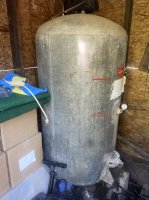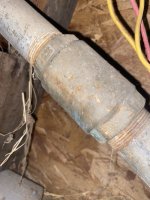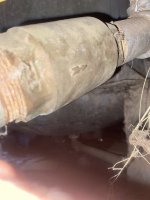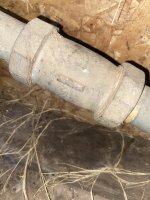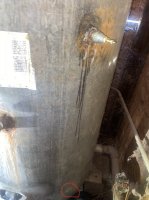WellWaterisbest
New Member
Hey! New here, just created an account to ask a question. Some context before I get into the question. We’ve been living in our home for the past 20 years using this well system without any chlorinators or water softeners. Just a regular galvanized hp tank with an inlet and outlet straight to the house and the water does have a bit of calcium in it but other than that it’s very good and “crisp”. Well is about 150ft deep with the pump at 120ft. We did replace the submerged pump once in our lifetime so far and that was a while back, prob around 2008. Anyway according to the writing on a concrete block covering the well hole this well is 62 years old, the tank may be too, I’m not sure as I don’t remember us every replacing the tank. Reading up a little on how hydro pneumatic tanks work, there is supposed to be a snifter valve to replenish the air in the tank which I don’t see one. There is an avc however, although it’s leaking but without a snifter it’s basically useless right? Or am I wrong? There is a Schrader valve to replenish the air manually but the avc leaking is what prompted me to research a bit more. So my questions are this.
1: Is it missing a snifter valve?
2: Which is the check valve in the picture?
3: What's this big stud and bolt on the bottom of the tank for?
Edit: I took a second look at the fittings before the pressure switch and the the fitting closest to the pressure switch looks to be copper underneath so I’m guessing that’s the union and the one further down the line to the right is the check valve? There’s no capped off holes to where a snifter valve would go. It’s all smooth all the way around.



1: Is it missing a snifter valve?
2: Which is the check valve in the picture?
3: What's this big stud and bolt on the bottom of the tank for?
Edit: I took a second look at the fittings before the pressure switch and the the fitting closest to the pressure switch looks to be copper underneath so I’m guessing that’s the union and the one further down the line to the right is the check valve? There’s no capped off holes to where a snifter valve would go. It’s all smooth all the way around.
Last edited:

